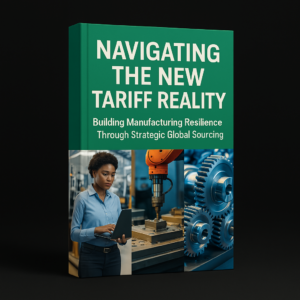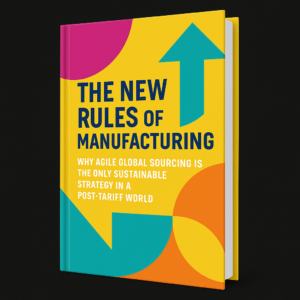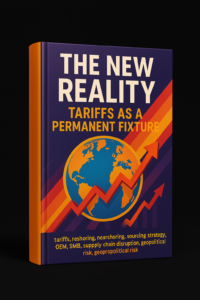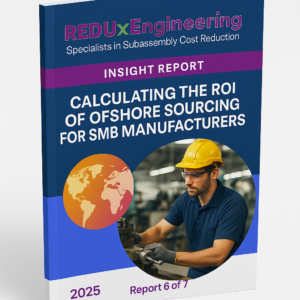
In recent years, a surge of interest in “bringing manufacturing back home” has swept through the industry. On the surface, reshoring production to the U.S. promises control and security. However, the practical reality for many SMB manufacturers is that an all-onshore approach carries its own set of costs, risks, and hidden pitfalls. This paper examines the flip side of the reshoring trend – from capacity bottlenecks and escalating local costs to the strategic vulnerabilities that arise if you abandon global sourcing entirely.
The Capacity Crunch and Cost Surge
One major challenge with exclusively domestic production is the limited manufacturing capacity available in-region. The U.S. industrial base, after decades of offshoring, simply cannot expand overnight to meet surging demand. When too many companies chase too little capacity, the outcome is predictable: lead times grow and prices soar.
Evidence of this capacity crunch is mounting. Industry observers note that as manufacturers rushed to onshore in recent years, domestic contract manufacturers quickly maxed out their production schedules. Backlogs grew, and any new orders had to wait in line. A REDUx analysis forecasts that it could take 20 years and trillions of dollars of investment for U.S. manufacturing infrastructure to catch up to current demand if reshoring continues unabated. In the meantime, manufacturers face the fallout:
- Longer Lead Times: With factories over capacity, previously routine orders can face extended queues. (As one scenario, a part that took 6 weeks might slip to 4–5 months for delivery when domestic suppliers are overbooked.) Such delays wreak havoc on production schedules and customer commitments.
- Higher Domestic Pricing: It’s Economics 101 – when demand outstrips supply, prices rise. U.S. job shops and vendors are increasing quotes, often substantially, knowing that customers have few alternatives in the short term. Recent data backs this trend: U.S. manufacturing unit labor costs climbed about 3.3% in 2024 alone, reflecting wage inflation that inevitably gets passed through to product pricing.
- Quality Strain: Perhaps most counterintuitive is that quality can suffer under an onshore-only approach when domestic suppliers are stretched thin. Reports of higher defect rates and inconsistency have emerged as some U.S. plants run at 110% to meet demand. In a rush to increase output without adequate capacity, mistakes multiply – workers get tired, machines skip preventive maintenance, and oversight slips.
Strategic Vulnerabilities and Missed Opportunities
Beyond the immediate operational issues, a purely onshore manufacturing strategy can put a company in a precarious strategic position. You might solve one set of problems only to expose yourself to others:
- Lack of Flexibility: Companies with no offshore options may struggle to respond if market conditions change. For instance, imagine domestic costs keep rising or a new tariff exemption makes imported components far cheaper – a firm that’s fully tied to U.S. production could find itself unable to pivot quickly, locked into a high-cost structure. It’s telling that 47% of North American manufacturers have no plans to fully reshore operations, precisely because they recognize the need for flexibility.
- Trade Policy Whiplash: Recent history has shown that tariffs and trade policies can swing with each administration. An all-in onshore strategy might look good under protectionist tariffs, but if those tariffs are reduced or eliminated (a real possibility in upcoming election cycles), the cost gap swings back in favor of offshore suppliers. Companies that “bet wrong” on permanent tariffs could be left holding the bag – facing 20-30% higher costs than competitors who retained global sourcing ties. As one industry executive put it, if you abandon offshoring and your competitors do not, you may be “putting yourself out of business.”
- Global Market Penalties: Manufacturing everything domestically can also hurt a company’s international sales strategy. When you export a U.S.-made product, other countries may impose import tariffs on it. If your competitors manufacture within or near those foreign markets (or drop-ship from low-cost countries), they can often undercut your pricing globally. One advantage of maintaining an offshore supply chain is the ability to fulfill orders for Asia or Europe from within those regions, avoiding tariffs and heavy shipping costs, thereby boosting competitiveness in overseas markets.
Case in Point: The High Cost of “Staying Home”
To illustrate, consider an anonymized example from a mid-sized U.S. electronics device manufacturer. Concerned about tariffs and political pressure, they decided in 2019 to localize production of a critical metal enclosure that was previously sourced from a trusted supplier in Taiwan. They invested in new equipment and partnered with a domestic fabricator. Initially, things were fine – unit cost went up 15%, but it felt acceptable for “Made in USA” and shorter transit.
Fast forward two years: domestic demand rebounded post-COVID, that local fabricator’s lead times tripled, and rush fees were implemented for timely delivery. Meanwhile, the tariff exemptions were introduced on certain metal imports, meaning the Taiwanese supplier’s parts would have actually been ~10% cheaper than the now-inflated domestic price. Ultimately, the company faced stockouts and had to scramble back to offshore sourcing (after having let that supplier relationship go cold). This cautionary tale is not unique – it underscores how quickly the variables can change and how an inflexible supply chain can hurt a business.
Balancing Local and Global – A Resilient Approach
None of this is to categorically dismiss reshoring. There are products and situations where local manufacturing makes sense. The key is to approach it with eyes open to the trade-offs. Many successful SMBs are now adopting a blended strategy: retaining domestic production for certain core or high-complexity items, while leveraging offshore partners for cost-sensitive subassemblies or volume components. This balanced approach prevents the single-point failure of an overloaded local supply chain while still reaping cost benefits globally.
In summary, going all-in on onshore manufacturing can amplify hidden costs and risks that offset its intended benefits. High labor costs, stretched lead times, and strategic inflexibility are real threats to profitability and growth. Manufacturers should carefully weigh these factors and consider maintaining a diversified supply base. Often, the best solution is not “either/or” but a calculated combination of domestic strengths and global efficiencies. With the right strategy (and the right partners to execute it), a manufacturer can enjoy stability at home and agility abroad – keeping costs in check and options open no matter what the future brings.
Making it Safe, Flexible and Successful:
REDUxEngineering can be your “Managed Offshore Sourcing” department, providing SMB manufacturers the on-demand specialized expertise, pre-vetted CM partners. multiple international destinations, language skills, long-term regional relationships and on-site QA staff needed to safely, efficiently, and quickly tap into the savings that diversified global sourcing has delivered to multi-nationals for decades. Hop on our calendar for a 20 minute briefing: https://app.apollo.io/#/meet/david_orton_b36 , or email us with times that work for you: [email protected].
Bibliography (Strategy Paper 2):
- REDUx Engineering – “The Numbers Don’t Lie” White Paper. (2025) – Analysis of the impact of rapid onshoring on U.S. manufacturing capacity, costs, and quality.
- Boston Consulting Group – “Why Manufacturers Need to Focus on COGS.” (2024) – Highlights that 65% of global executives prioritize cutting supply chain & manufacturing costs; underscores pressure to manage rising costs.
- U.S. Bureau of Labor Statistics – Productivity and Costs Report, 2024. (Mar 2025) – Reports U.S. manufacturing labor cost increases (+3.3% in 2024) outpacing productivity, contributing to higher domestic production costs.
- Eddy Azad (Fast Company Exec Board) – “Reshoring: When and where it makes sense.” (FastCompany.com, 2025) – Notes that 47% of North American manufacturers have no plans to reshore due to significant challenges and trade-offs.
- Lee Kuan Yew – Quote on outsourcing: “If you deprive yourself of outsourcing and your competitors do not, you’re putting yourself out of business.”– Emphasizes the competitive risk of ignoring global sourcing.
- REDUx Engineering – Case Study: Domestic vs. Offshore Pivot. (2023) – Internal case analysis illustrating the consequences of over-reliance on domestic suppliers (anonymized client example).






